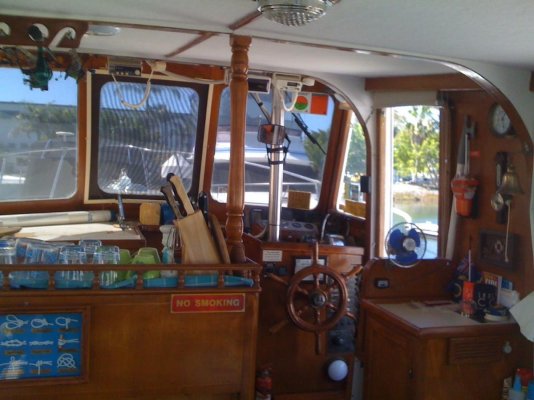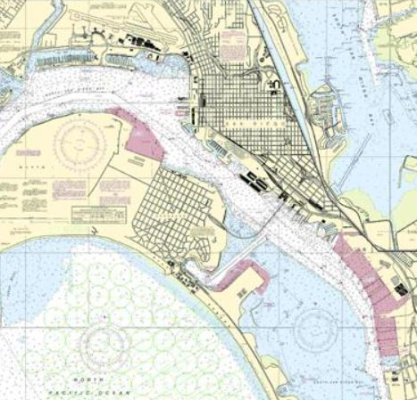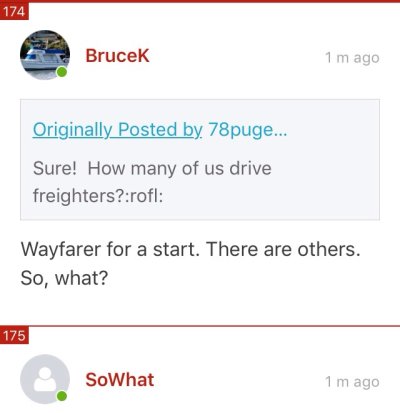In some cases, this will put you out of the channel, aground or into another boat.
You need to be aware of your surroundings at all times and that includes other boats.
Which is why I said...
...if there is sea room, a quick bear away without slowing, so as to present the stern quarter or even full stern to the wave is often the best...
However for my little oar, if I might stick it in, I think rather too much is being made regarding the onus of the waked/overtaken boat to keep watching the rear all the time. Let's get real. If there is one direction one should least expect a sudden danger to present from, it's behind you. The only possible danger that should ever come from behind, (as you have, by definition, successfully navigated past any other hazards), is an overtaking boat. And for mine, (although I actually have a rear vision mirror installed to protect from this sort of thing, see pic), with any vehicle, be it boat, plane or car, the overtaking vehicle must in effect, 'give way'. In other words consider what might happen as they pass, and take the required action to minimise any problem. That is just obvious common sense to me.
On the road, it is an absolute. On the water the ability to pass either side makes it a bit less clear cut, but for that reason, this also makes getting surprised a bit easier, because of cabin noise, poorer rearward visibility than road vehicles, and the fact it can come at you from either side. I realise that to boaters on the plane, it all seems so smooth, they don't realise (or many appear not to), just how aggressive the wake they are making can be, depending on how close they go to a boat they are passing, and I also accept it is a pain coming down off the plane, then soon after, back up on it, because of increased fuel it consumes. But even so, trying to save fuel does not justify a
close pass of a
clearly unsuspecting boat, at a semi or full planing speed.
Here is how I try to prevent it however, as it will still happen. Note rear vision mirror making use of the damned steering chain pole. At least it is useful for something...







